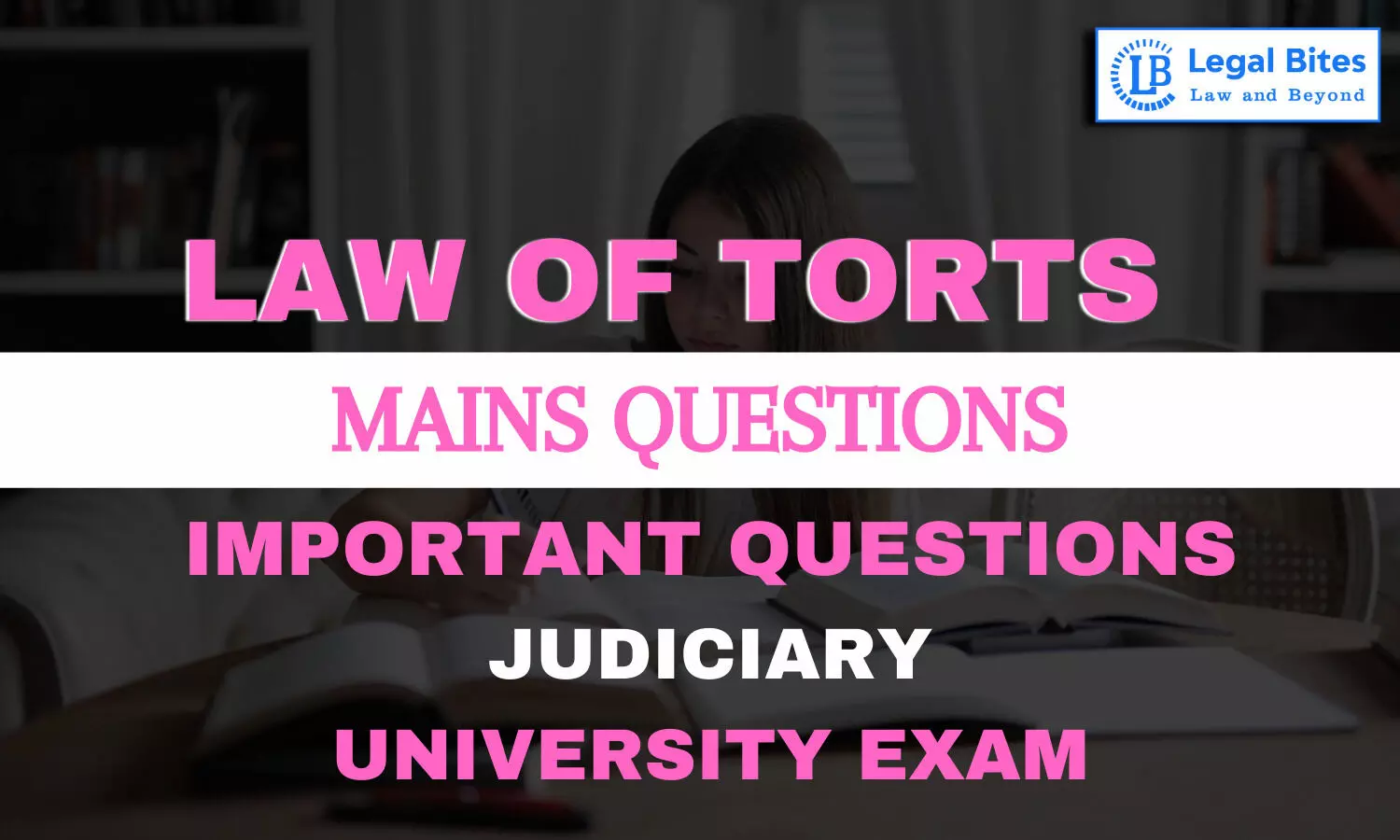What do you understand by the expression `Nuisance'? What are the kinds of nuisance?
Find the question and answer of Law of Torts only on Legal Bites.;

Question: What do you understand by the expression `Nuisance'? what are kinds of nuisance?Find the question and answer of Law of Torts only on Legal Bites. [What do you understand by the expression `Nuisance'? what are kinds of nuisance?]AnswerNuisance is a legal term used in tort law to describe a situation where a person or entity causes substantial and unreasonable interference with the use and enjoyment of another person's property or land. A nuisance can be caused by an act, omission...
Question: What do you understand by the expression `Nuisance'? what are kinds of nuisance?
Find the question and answer of Law of Torts only on Legal Bites. [What do you understand by the expression `Nuisance'? what are kinds of nuisance?]
Answer
Nuisance is a legal term used in tort law to describe a situation where a person or entity causes substantial and unreasonable interference with the use and enjoyment of another person's property or land. A nuisance can be caused by an act, omission or failure to act and can involve both intentional or unintentional conduct. Nuisance can cause physical discomfort, loss of amenities, or damage to property.
In tort law, a nuisance is a type of harm caused by the unreasonable, unlawful, or unwarranted use of one's property that interferes with the use and enjoyment of another person's property. A nuisance can take many forms, including noise pollution, pollution of air or water, obnoxious odours, or excessive vibrations.
To establish a nuisance claim, the plaintiff must show that the defendant's conduct created a substantial and unreasonable interference with the use and enjoyment of their property. The interference must be more than a mere annoyance or inconvenience and must be such that it would be offensive or intolerable to a reasonable person in the community.
There are two kinds of nuisance: public nuisance and private nuisance.
Public nuisance: A public nuisance is an activity that interferes with the rights of the public or a considerable number of people. It is a harm that affects the general public and may involve interference with public health, safety, or morals. Examples of public nuisance include obstructing a public highway, causing excessive noise, or polluting a water source.
Private nuisance: A private nuisance is an activity that substantially interferes with the use and enjoyment of an individual's land or property. It is a harm that affects a specific person or a small group of people. Examples of private nuisance include excessive noise, vibrations, or odours emanating from a neighbour's property, or an overhanging tree causing damage to a neighbour's roof.
The case of Ram Baj Singh v. Babulal, 1982 All 285, is a notable case in Indian tort law regarding public nuisance. In this case, the defendant, Babulal, had constructed a flour mill in a densely populated residential area. The operation of the flour mill caused a lot of noise, vibration, and dust, which interfered with the use and enjoyment of the neighbouring residents' properties. The residents filed a lawsuit against Babulal, claiming that his operation of the flour mill was a public nuisance.
The Supreme Court of India held that the operation of the flour mill did indeed constitute a public nuisance. The Court noted that the flour mill was located in a densely populated residential area and that the noise, vibration, and dust generated by the mill interfered with the residents' use and enjoyment of their properties. The Court further noted that the operation of the mill also posed a risk to public health and safety.
The Court ordered Babulal to stop the operation of the flour mill and to pay compensation to the residents for the harm caused by the public nuisance. The Court also emphasized the importance of balancing the interests of individuals with the interests of the community as a whole, and the need for individuals to use their property in a way that does not harm the rights of others.
Overall, the Ram Baj Singh v. Babulal case established the principle that the operation of a business or activity that causes a public nuisance may be prohibited and that the affected parties may be entitled to compensation for the harm caused by the public nuisance.
Both public and private nuisance can be actionable in law, meaning that the affected party may bring a legal action seeking an injunction to stop the nuisance or damages for the harm caused. However, the standard of proof and the remedies available differ between the two types of nuisance. In the case of public nuisance, it must be shown that the harm caused is significant and affects a large number of people, whereas, in private nuisance, the interference must be substantial and unreasonable.
A nuisance is a legal term used to describe an activity that substantially and unreasonably interferes with the use and enjoyment of an individual's property or land. There are two types of nuisance: public and private, and the remedies available to the affected parties depend on the type of nuisance involved.





